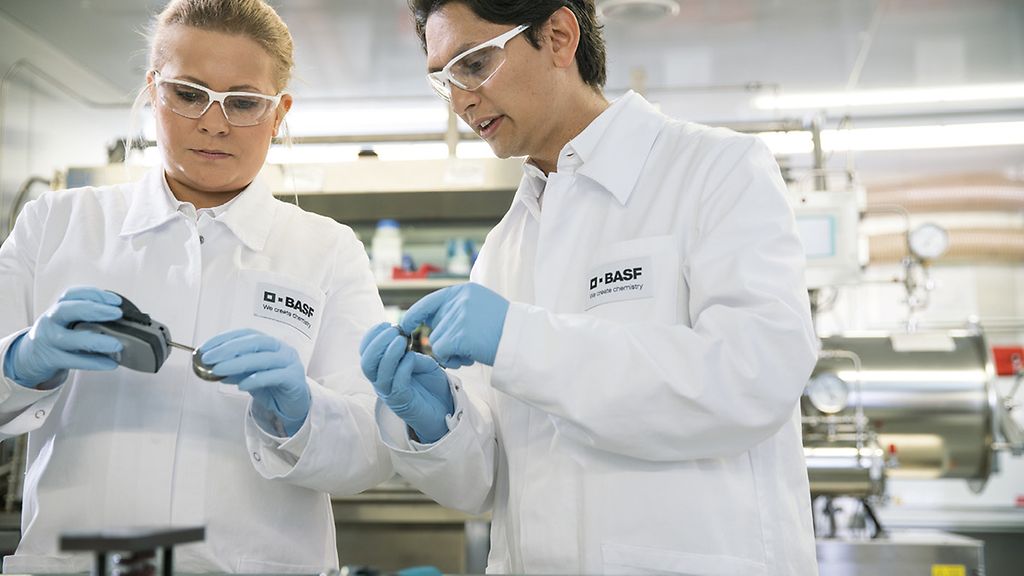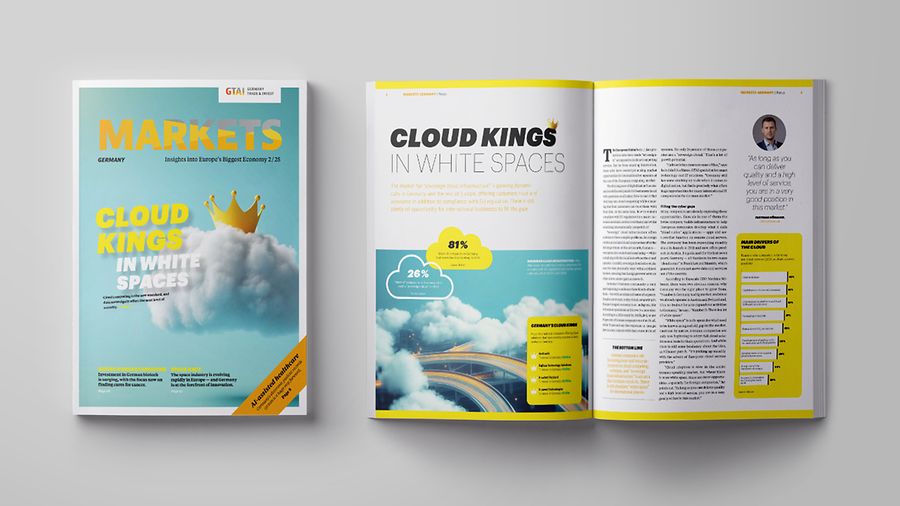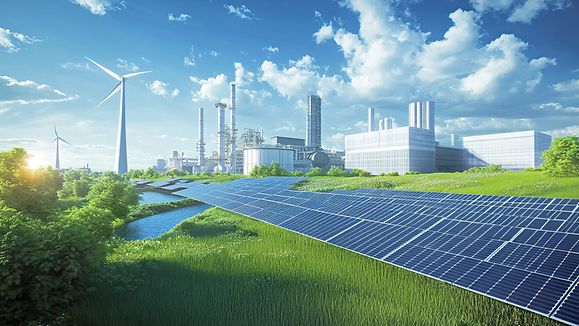
Markets Germany Magazine 2/25 | Sustainability
Getting Down to Zero
Europe’s economy is on a pathway to greater sustainability and independence. The European Union’s Net-Zero Industry Act has established a robust framework for investments in green transition technologies, offering multiple advantages for businesses operating in Germany.
Jul 31, 2025
The European Union (EU) has set the ambitious goal of becoming climate neutral by 2050, with Germany positioning itself to achieve this target five years earlier than that. Reaching these critical milestones requires significant investment in net-zero technologies.
That’s the background of the Net-Zero Industry Act (NZIA), which came into force in 2024. The new legislation is designed to boost the production of climate-friendly technologies within Europe, reducing reliance on imports, particularly from China and other single suppliers. Key elements include electric batteries, solar panels, wind power, heat pumps and hydrogen solutions. The ultimate goal is to enhance Europe’s industrial competitiveness, self-sufficiency and sustainability.
The NZIA offers several advantages for companies operating in Europe, including Germany. It streamlines approval processes for climate-friendly technologies, fosters investment and strengthens domestic production. It also opens up opportunities for businesses investing in innovative sustainable solutions.
“This is particularly true for Germany, with its strong industrial base, outstanding research landscape and targeted funding programs,” explains Christina Schön, Senior Manager of Investor Support Services at Germany Trade & Invest (GTAI).

This article was published in issue 2-2025 of the Markets Germany Magazine. Read more articles of this issue here
A new age of opportunity for Europe
The NZIA identifies 19 key net-zero technologies, ranging from photovoltaics and wind power to batteries, energy storage, heat pumps, geothermal energy, electrolyzers and hydrogen solutions as well as CO2 capture and storage. The EU legislation actively promotes and prioritizes these technologies while allowing member states the leeway to choose between different energy sources and determine the general structure of their energy supply.
By 2030, the EU wants to cover at least 40 percent of its annual demand for these technologies domestically. By 2040, at least 15 percent of global net-zero technology production is predicted to come from the EU. “With the NZIA, industrial policy is finally taking a more proactive stance,” says Anna Leipprand from the Transformative Industrial Policy research division at the Wuppertal Institute. “This is a crucial step in the right direction.”
The act includes practical measures to save companies time and money. It establishes single points of contact to coordinate efforts, improve information flow between businesses and authorities, and reduce redundancy in approval processes. While the NZIA itself does not create new public funding programs, it consolidates and simplifies existing national and EU-wide initiatives.
Additionally, the act includes provisions regarding public procurement. For instance, public authorities must meet certain sustainability and resilience criteria. The legislation also facilitates the testing of new technologies in real-world conditions, with a particular focus on granting access to start-ups and small-to-medium enterprises (SMEs). Moreover, the NZIA encourages the creation of European academies, initially funded by the EU Commission, for training and education in key technological fields.
The Bottom Line
The Net Zero Industry Act is designed to secure the future of European industry by increasing investment in innovation, reducing reliance on imports and streamlining approval processes.
Germany leading the way
As a strong advocate of EU climate goals, Germany plays a leading role in the expansion of renewable energy. Recent data from the European Commission underscores this. Germany’s annual electrolyzer production capacity, for example, comes in at 3.3 to 3.5 GW — or 59 percent to 63 percent of total EU capacity.
Germany’s strength in clean technologies presents a compelling incentive for foreign companies looking to invest in the sector and benefit from NZIA initiatives. Thomas Grigoleit, Director for Energy, Building & Environmental Technologies at GTAI, emphasizes: “Germany’s numerous industrial and technology clusters provide ideal conditions for the development and implementation of the net-zero technologies outlined in the NZIA.”
The demand for net-zero technologies within Germany is already high, “and will continue to grow in the future,” says Grigoleit. Germany’s photovoltaic capacity is set to increase from approximately 100 GW in 2024 to around 215 GW by 2030, and 400 GW peak by 2040. Industries such as hydrogen, grid technologies, and battery production are also expected to expand rapidly. Combined with the NZIA measures, this offers decisive advantage to companies operating in Germany.
Acceleration valleys
Under the NZIA, EU member states can designate specific regions as net-zero “acceleration valleys” — strategic areas designed to fast-track the development of climate-friendly industries. “The advantages of the NZIA apply throughout Germany,” explains Jasmin Krafft, Manager of Investor Support Services at GTAI. “But there are added benefits when setting up in an acceleration valley or a region offering financial incentives.” GTAI takes a project-based approach to helping international companies identify optimal locations for their expansion.
Currently, two acceleration valleys for the production of net-zero technologies are emerging: one on Germany’s northwest coast and another in the eastern region of Lusatia. Both areas are undergoing structural transformation. Lower Saxony is a pioneer in the expansion of renewable energies, using its strong potentials for the production of wind energy and hydrogen along the North Sea coast, while Lusatia is transitioning from traditional coal mining to clean technologies. These regions boast ample land, existing infrastructure, a skilled workforce and strong political support — ideal conditions for sustainable economic redevelopment. That means major opportunities for international companies.
Lusatia: a Net Zero Acceleration Valley
From the shore of a large lake in the eastern region of Lusatia, day trippers can relax by the water, a power station looms in the distance and an amusement park offers a clear view of an industrial facility. A typical scene for this very special part of Germany. An open-minded attitude has contributed to bringing representatives of the regional cities and municipalities, industry, research institutions, and political life in Lusatia together to form a “Net Zero Valley.” Net Zero Valleys are areas where acceleration and simplification are promoted in the rapid establishment of net-zero technologies.
Companies based there have benefited — among other things — from simplified approval procedures, targeted funding and strong partnerships. As Dr. Markus Niggemann, Head of the Net Zero Valley Lausitz Task Force emphasizes: “Net Zero Valley Lausitz offers us the opportunity to market and make our region even more attractive in Europe and beyond. Many business representatives are already looking to Lusatia and hoping for an efficient and profitable development of the valley.”
Lusatia submitted its official application in March 2025 as the first valley in the whole of Europe and aims to become a pioneer in Europe and beyond. Building on this momentum, Lusatia is targeting business in the batteries, energy storage, energy efficiency and hydrogen solutions sectors.

